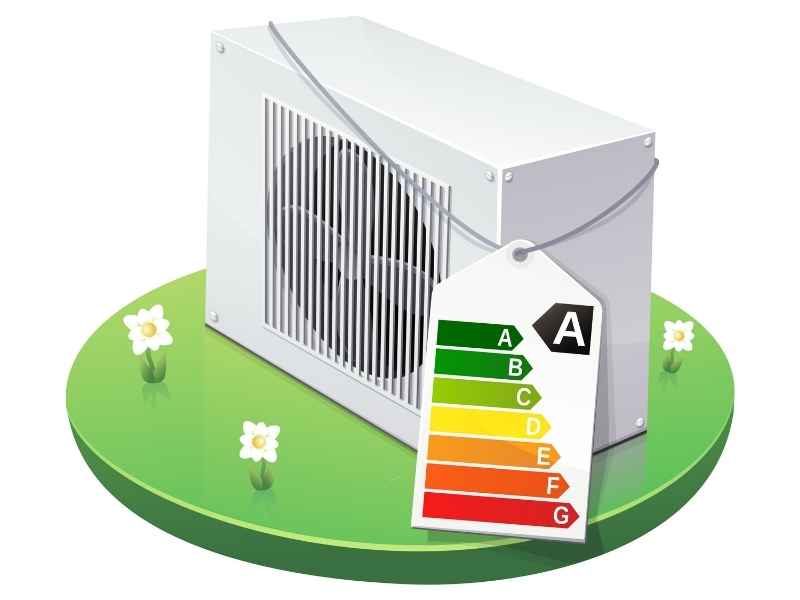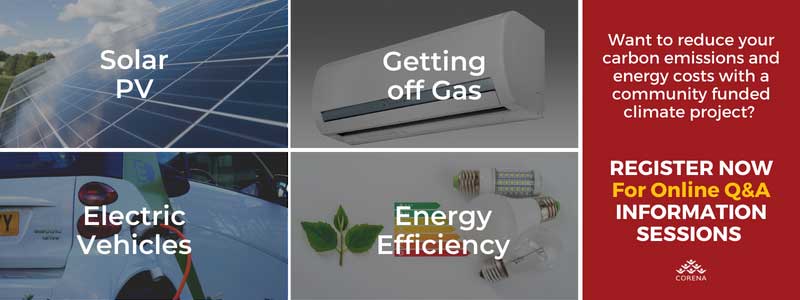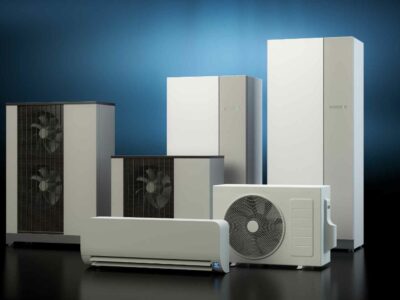You may have heard about heat pumps before, but the reality is many people actually know little about them other than what their name suggests. Heat pumps are not just a cost-effective way to heat and cool your workplace, but can also go a long way in helping your not for profit, charity, community organisation or social enterprise reduce carbon emissions and tackle the climate emergency.
CORENA works with a wide range of non profits, providing technical advice and interest free loans to fund heat pumps, solar panels, and other energy efficiency initiatives. We’ve put together this heat pumps guide so you can get a clearer idea of what they do, their benefits, and how you can purchase one without being out of pocket.
What Are Heat Pumps?
Fridges, reverse cycle air conditioners, and heat pump hot water systems are the most common heat pump appliances. Reverse cycle air conditioners and heat pump hot water systems are very efficient. They are becoming increasingly popular as a way to reduce energy use and make use of solar energy.
A heat pump is an appliance that heats a building (or parts of it) by the transference of thermal energy from outside, by use of a refrigeration cycle using refrigerants. Some heat pumps, particularly air conditioners, can also operate in reverse by cooling through the movement of heat from inside to outside. Often, heat pumps can work in both modes, depending on their users\’ needs.
Refrigerants are important parts of heat pump systems. It is through their use that heat is able to be moved.
When a heat pump is in heating mode, a refrigerant at the outside temperature is compressed. This results in the refrigerant becoming hotter and the thermal energy is moved to where it’s needed. Later, the refrigerant moves outside again, is decompressed, and the process is repeated. Heat pumps are run with electricity, but much less than other types of heaters.
If you\’re interested in how heat pumps work, then this article Heat Pumps Explained is worth a read.
Electric Heat Pump Types
There are a variety of heat pumps: water source heat pumps (WSHP), air source heat pumps (ASHP), ground source heat pumps, and exhaust air heat pumps.
While ASHPs extract their heat from the air, you may wonder where is the water that WSHPs get for theirs. Often water source heat pumps rely on a natural resource, such as a hot spring or other geothermal water. There are even some which use waste hot water from industry or even septic tanks.
Which Type Of Heat Pump Is Best?
A non profit would typically only ever use an air source heat pump in the form of a reverse cycle air conditioner or hot water system. Luckily, air source heat pumps are well established technologies and commonly available. Ground source heat pumps can also sometimes be used in larger facilities for heating and cooling – although these systems are much more complex.
The average heat pump’s life is from 10 to 15 years. If you find your heating or cooling costs increasing then it’s probably time to think about a replacement.
Heat Pump Benefits & Use
Having talked about what heat pumps are, let\’s talk a bit about some of the benefits they provide and how widely they are currently used.
The most readily available are heat pump hot water systems and reverse cycle air conditioners. Heat pumps warm buildings using heat from sources such as air and ground, and they do this three times more efficiently than gas boilers.

Information about the percentage of Australian homes that have heat pumps is not readily available, although there has been a significant increase since 2014. Other countries, particularly in Europe, are rapidly increasing their use, with Norway having one heat pump for every four people.

The Efficiency of Heat Pumps
A heat pump’s efficiency is measured by its coefficient of performance (COP), or the seasonal coefficient of performance (SCOP). The greater these numbers are the better. High values show a heat pump is more efficient and uses less energy. When used for heating, heat pumps are far more energy efficient than fuel heaters or most electrical heaters.
Because of this efficiency and the ever-increasing proportion of fossil-free energy in electrical grids, heat pumps play a vital role in reducing carbon emissions. It is estimated heat pumps can meet 90% of global heating requirements with a much lower carbon footprint than other types of heaters.
As we learned previously, a heat pump\’s efficiency is measured by its Coefficient of Performance (COP). The COP is obtained by dividing the energy delivered as heating by the work energy required to get that heating. The higher the COP is, the more efficient the heat pump is. Generally, the COP depends to a great degree on operating conditions, especially differences between external and internal temperatures. The less this difference, the easier for heat transference.
Some air conditioners and hot water systems have a better COP than others. This information is translated into a user-friendly form on your heat pump’s mandatory Zoned Energy Rating Label showing the performance of the appliance in different climate zones. When buying a reverse cycle air conditioner it is important to purchase one with the highest efficiency rating you can afford. Hot water heating and air conditioning are the two biggest energy users in most buildings and it\’s usually worth paying a bit more up front to reduce your ongoing energy costs. There is more information on how to read these labels on the official Energy Rating website.
Grants For Heat Pumps
As previously mentioned, Australia is well behind in the uptake of heat pumps and government incentives and grants are not as extensive as in other countries. Currently, Victoria offers a grant for the installation of heat pumps, and some other states offer types of rebates.
Heat Pumps Funding For Non Profit Organisations
If you need up front capital to replace old, inefficient or gas appliances with heat pumps apply for an interest free loan with CORENA. We receive, record, and transparently report donations from the community. We use that money to fund projects that benefit the planet including:
- Heat pumps
- Solar Panels
- Energy Efficiency
- Getting Off Gas – Replacement of fossil gas appliances with electric alternatives
- Electric Vehicles
- A combination of the above
We can also help you calculate the business case for the upgrade by working out your carbon and cost savings as well as other technical advice.
Learn more in 5 Ways CORENA Helps Non Profits Reduce Carbon Emissions & Energy Costs
You don’t pay any interest on your CORENA loan, and the quarterly loan repayments are set to be a little less than the savings on your operating costs averaged over a year.
This means you are never out of pocket and after your loan is fully repaid you reap the full financial benefit of having lower operating costs.
To learn more, check out how to apply for a loan, or register for one of our upcoming Online Q&A Information Sessions.


